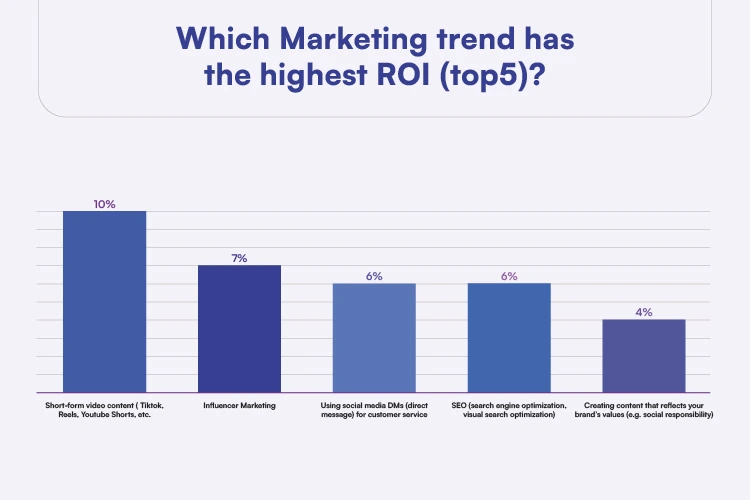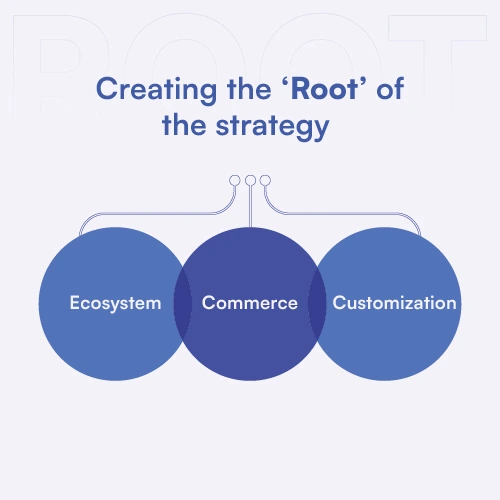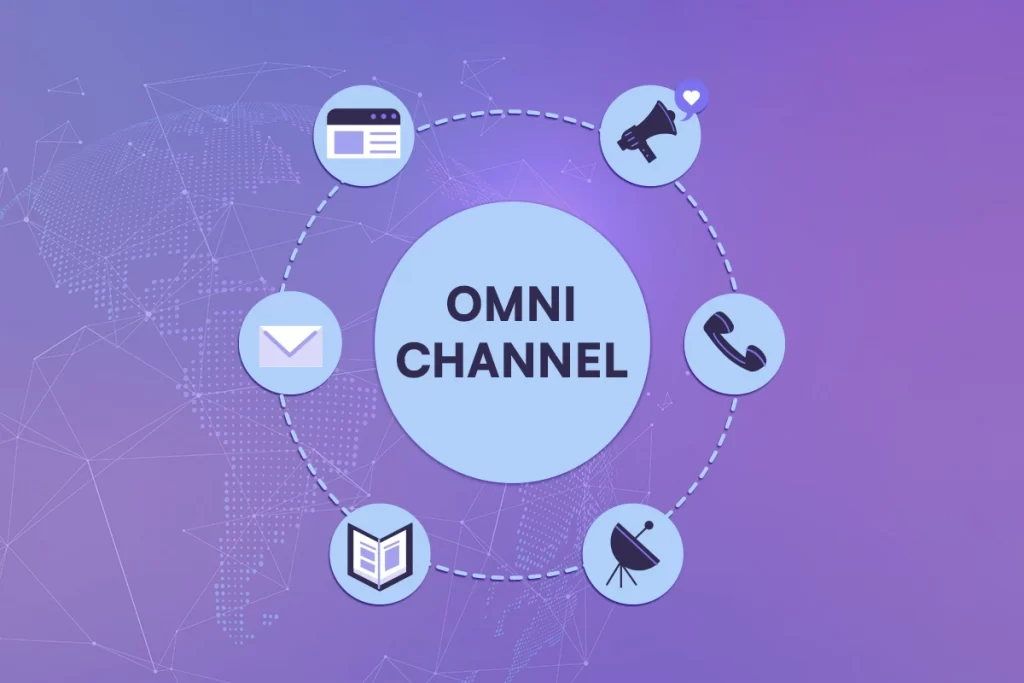Content is King. We don’t need to ask how content contributes to a marketing strategy since it itself is the strategy.
Have you ever given thought to the potential of exceptional content to completely transform an organization? New forms of advertising are constantly bombarding us; companies’ careful planning and strategic execution of content have made products and services more engaging and reliable; and the proliferation of social media has made it easy to present the intended audience with content that is cutting-edge, user-friendly, and consumed at a rate far exceeding that of many other facets of business.
Businesses of all sizes and stages, both new and established, may reach out to customers more easily than ever before. Because of the overwhelming number of commercials people are subjected to daily, a growing percentage of them have begun to reject more conventional forms of marketing. Brands need to create premium content if they want to stay competitive.
Over 42% of internet users, it is claimed, employ ad blocking software. According to Hubspot, 82% of marketers now have a content marketing plan in place because of this.

Yet many marketers still lack a coherent plan despite this trend toward content-driven techniques. Only 43% of marketers, according to a study done in 2021, have a clear strategy.
Thus, you must plan to create a linked brand network for content delivery to fulfil your target audience’s needs. Even though all modern businesses are present across multiple channels, creating a unified experience appears to be the most effective content strategies of today, bringing into play Omnichannel content strategies, which guarantee a unified service across all digital and physical touch points for the customer.
In this article, we will walk you through the Omnichannel content strategy ideas and guidance that will get you started on your content strategy journey.
Explained – The Omnichannel Strategy?
Omni channel refers to customer-centric content strategies employed by all your brand’s platforms and channels to offer a consistent and associated customer experience.
The word “Omni” stands for “all,” and “channel” refers to the various channels via which customers can interact with a business, including in-person, online, on social media, and through emails, apps, SMS, and other digital locations.
Brands and their content are rarely viewed page-by-page online. Digital engagement occurs at several interconnected touch points across multiple platforms.
Multichannel, cross-channel, and integrated content strategies are all Omnichannel strategies. They all revolve around providing a consistent user experience throughout your company’s platforms and channels
In addition to the digital channels you already use, such as social media, email marketing, and your website, it is also important to meet with clients in person. A customer’s decision to buy can be influenced by their in-store experience, presentations, sales meetings meaning that wherever you look, the same brand story is being told.
Customers are increasingly making purchases across all channels—in person, online, and beyond. Omnichannel marketing acknowledges that clients’ needs vary. Some consumers desire low-touch, 24-hour communication, while others want more services for certain transactions. When organizations offer a variety of seamlessly integrated channels that adapt to customer preferences and guide them to the best solutions, omnichannel marketing works.
What is omnichannel strategy?
An omnichannel marketing strategy ensures that your efforts provide measurable economic value. Rather than rushing into the space or treating it recklessly, firms should take a step back and consider the underlying business value drivers. Excelling in omnichannel requires a laser focus on value creation, considering both strategic and customer priorities to build the most effective omnichannel approach for their specific circumstances.
Omnichannel content strategy: where to begin
- The first thing you need to know about designing a strategy is that it always begins as a state of disarray.
- The second is less is more, a principle of successful strategy. The plan of action should be simple. A content strategy that is ready to be implemented should be so simple that a child could grasp it. It is essential for all employees to fully grasp, internalize, and articulate the company’s strategy.
Because of this, obstacles must be removed.
Complex content strategies that are hard to explain have a far lower chance of being implemented successfully. This is because no one will have genuine alignment on the desired outcomes and the necessary means to achieve them.
Creating the ‘Root’ of the strategy
One of the finest ways to get started with any content strategy is to tailor a mind-set that liberates you from the problem’s complexities.
This may appear contradictory given that strategizing is about devising a strategy to deal with complexity and challenge. But we can assure you that stepping back from the problem and oversimplification in the beginning is beneficial.
A diagnosis: An honest assessment of the current situation. This should address where we are, where we want to go, and what is holding us back.
Coherent actions: A full, unified set of tasks that will take us to our desired destination.
A guiding policy: A course of action, a simple summary of how we’ll get to where we want to go.

The omnichannel strategies of the most successful companies are driven by their strategic objectives and consumer experience goals. Primarily, these methodologies or approaches rely upon three primary elements.
Ecosystem Based – Here, the plan is to offer comprehensive cross-channel platforms that cater to individual consumers’ wants and preferences.
Commerce Based – In this approach we give the in-store and online cross-channel shopping experience priority.
Customization Based – This method prioritizes scalable, relevant, and personalized cross-channel interaction.
Using the aforementioned three approaches, we can further simplify our content strategies, paving the way for a unified approach to strategies.
There are numerous sources containing models, theories, and concepts for developing the optimal approach. However, your strategy should be nothing if not simple. Surprisingly, it is difficult to accomplish simplicity at times.
Setting up our Objectives – Starting with the ultimate company aim might help you stay focused; otherwise, it’s very simple to become side-tracked. Many businesses publish content for the sake of it without focusing on their business goals. Due to the necessity for analytics tools to track down data, it is crucial to ensure that business analytics is fully configured. Page views, shares on social media, and e-commerce conversions are examples of possible metrics to monitor in your analytics systems.
Determine your target audience – Knowing your target audience’s online behaviours, purchases, and needs can help you serve them and even at times persuade customers. This needs describing their journey from discovery through consideration, purchase, and hopefully return. Knowing the target audience’s interests isn’t enough for marketers, user personas define customers.
Analyse the competition – Examine the content of your competitors after you’ve identified your target audience. Always be aware of what the competition is up to, but pay even closer attention to what they aren’t doing, our experts advise. Examine the keywords, themes, and duration of their website. Fill gaps in your competitors’ materials to add value to your target market. Good marketers are continuously on the lookout for new opportunities. Create a competitive content market study to examine your competitors’ strengths and weaknesses.
Choose your distribution channels – The digital marketing team at Cuneiform advises conducting a competitive SEO research when developing a marketing strategy because brand websites require high-quality content. The key is understanding where the most potent connections are coming from for your competitors so you can target those sites. “There is still power in links for higher ranking,” The content of influencer marketing is shared through social media. Alliances with businesses that are comparable but not competitors, however, could boost visibility. Limit the number of distribution alternatives you offer your team. Creating a YouTube account and blogs can help ”focus on distributing the content to the right people through the right channels.”
Mix up your content messages – “People buy solutions to whatever their pain point is,” so “when you’re trying to project confidence that you can solve their problem,” you get trust and profits. Educate them first, then show how your company can assist them. Different types of content are used for maximum impact can be used here, some marketers, especially small business owners, sell primarily on their personal interests or knowledge rather than customer demands. Marketing needs to be clear and practical. These qualities can make long-term content strategy more profitable.
Create content for the entire customer journey – What happens after top-of-funnel content attracts customers? Engaging and problem-solving content is essential. Many businesses continue to place too much emphasis on the top of the funnel while neglecting to provide content assets that can boost conversions at the bottom. Buyers start when they need a product or service. Marketing should continue after customer acquisition.” Long-term client ties increase lifetime value, promotions, discounts, and guidance keep customers.
The role content plays in creating an omnichannel strategy?
Maintaining cohesion and uniformity in all of your brand’s interactions with consumers is essential. Some form of content is present at every stage of the customer journey and contributes significantly to the whole.
Customer engagement is increased, and value is exchanged at each critical touch point in a well-designed experience. Recognizing and preparing for those areas of engagement can help you with your content strategy, even though each encounter is unique and depending on several things.
Planning out a content strategy
A successful content plan must be one that is implemented. It can be in any format or application; what counts is that it is accessible and that those who use it are willing to collaborate. A content strategy is intended to outline what will go live when and to provide an overview. This will assist you in ensuring that everything is consistent and communicates a consistent message across all mediums.
The following items must be included in your content plan:
- As a reminder, you might just write your overarching content purpose across the top of the plan. If you’re pushing particular topics within that time frame, you can have a distinct specified objective each week, month, or quarter.
- Note the dates and hours that the material will become live on the calendar.
- Specify the platform (such as a social network, email, or website) through which the item will be published.
- Creative assets are the copy and media that should be used (such as images, videos, gifs, and messaging, together with any links and hashtags).
The Three steps that help companies achieve omnichannel personalization
Establish a customized plan and learning schedule – Before setting goals for each stage of the customer journey, it’s important to identify the essential times of influence. Use cases should be prioritized based on their company value and consumer value.
Activate personalized experiences in physical places by addressing digital touch points – To enable multichannel customisation, businesses must connect their digital and physical footprints, particularly at touchpoints where two worlds collide. The top five touch points are mobile apps, digital displays, interactive screens, tech-savvy workers, and point of sale.
Adopt agile operating procedures – To bring the above-mentioned elements together, a company’s sales team must be well-trained and aligned. Since in-person teams can improve clients’ days, frontline workers must support customization initiatives, understand their value, and use digital technology to deliver the whole experience.
Conclusion
A successful content strategy recognizes where the target audience is and finds a means to be present and pertinent there. Therefore, it’s crucial to think about how each touch point offers clients some form of value, whether that value is utilitarian, educational, or entertaining.
Now that we have access to the relevant tools and solution providers, we can develop a comprehensive Omnichannel plan to meet all our information requirements.




